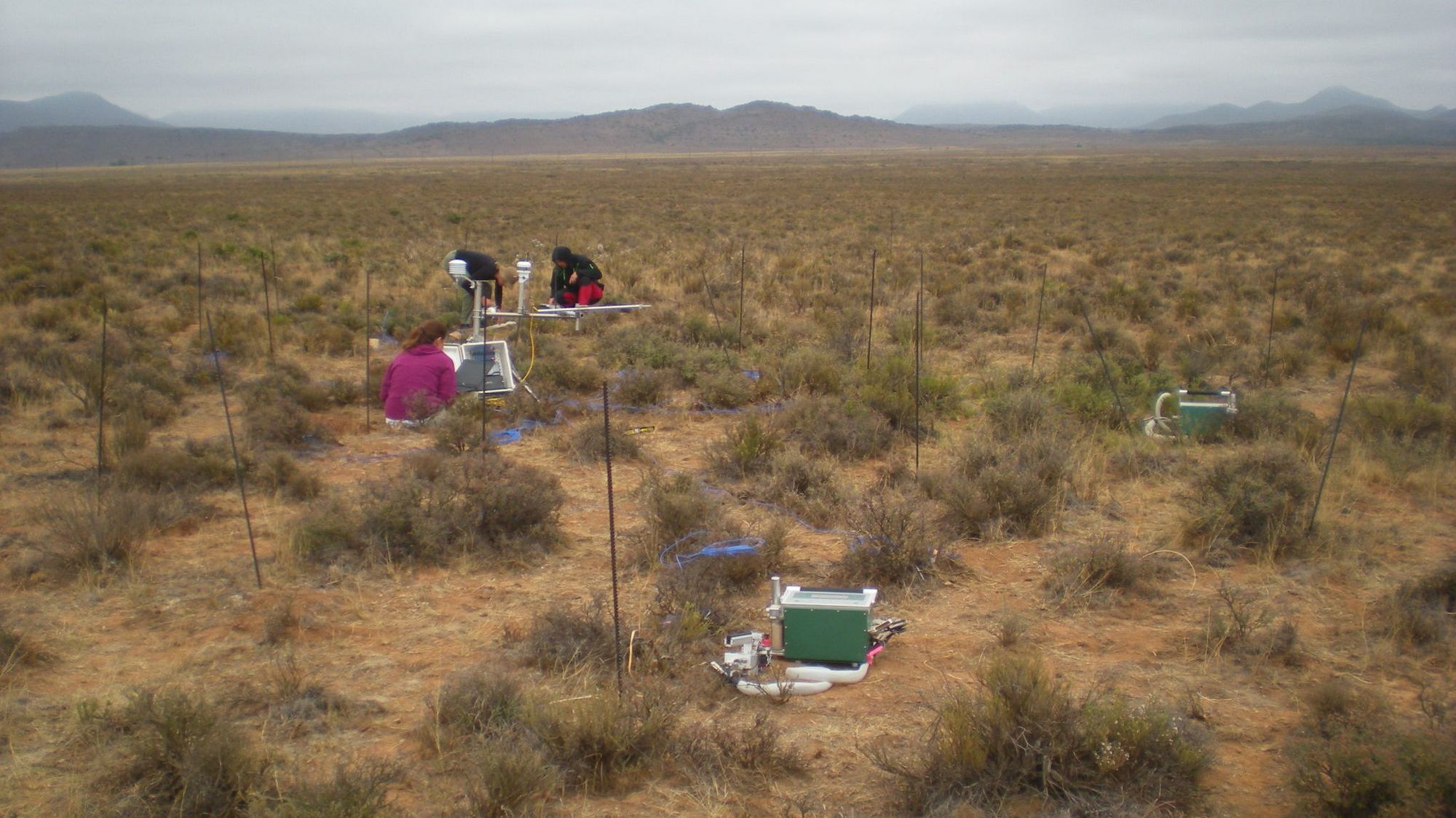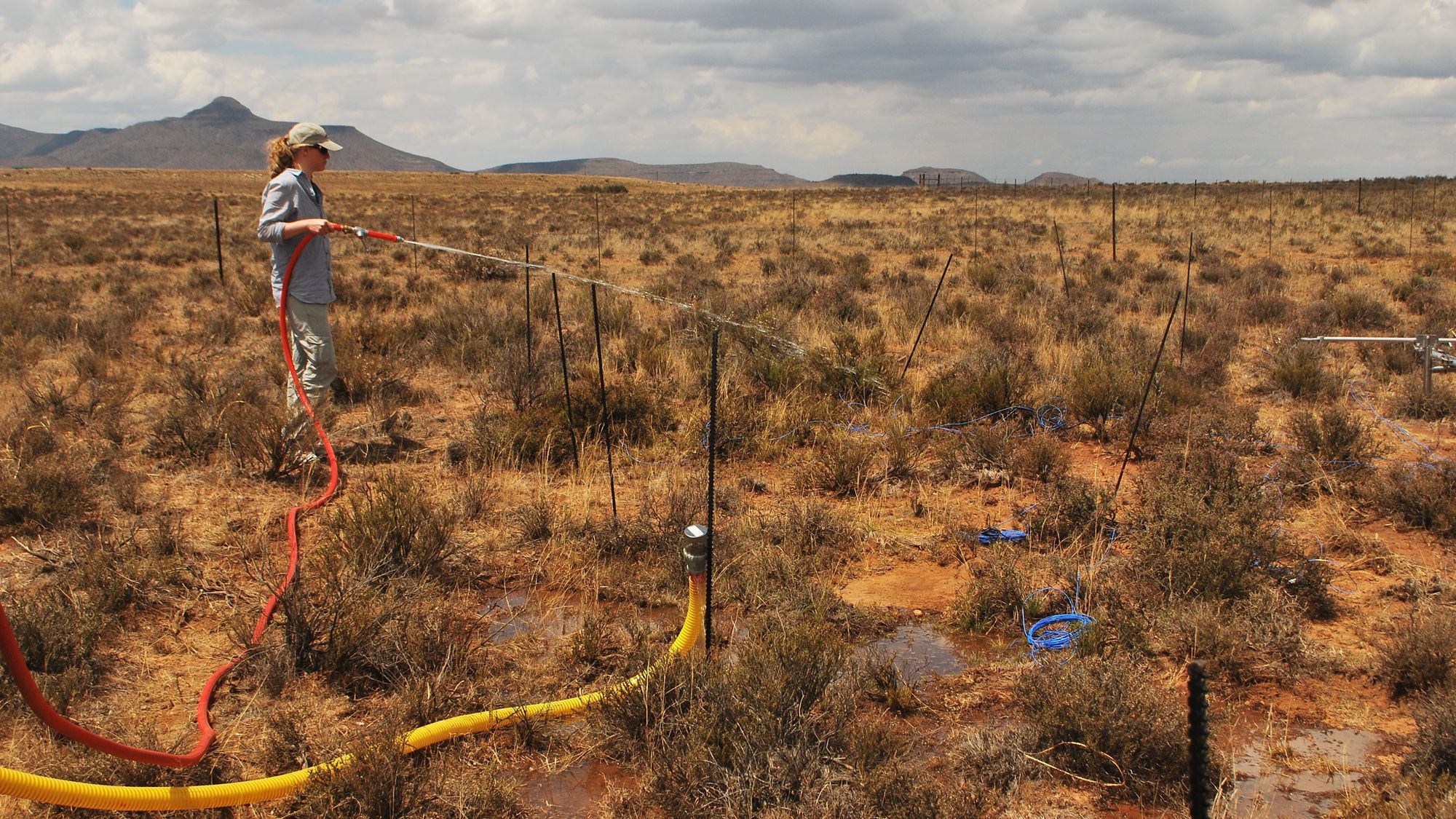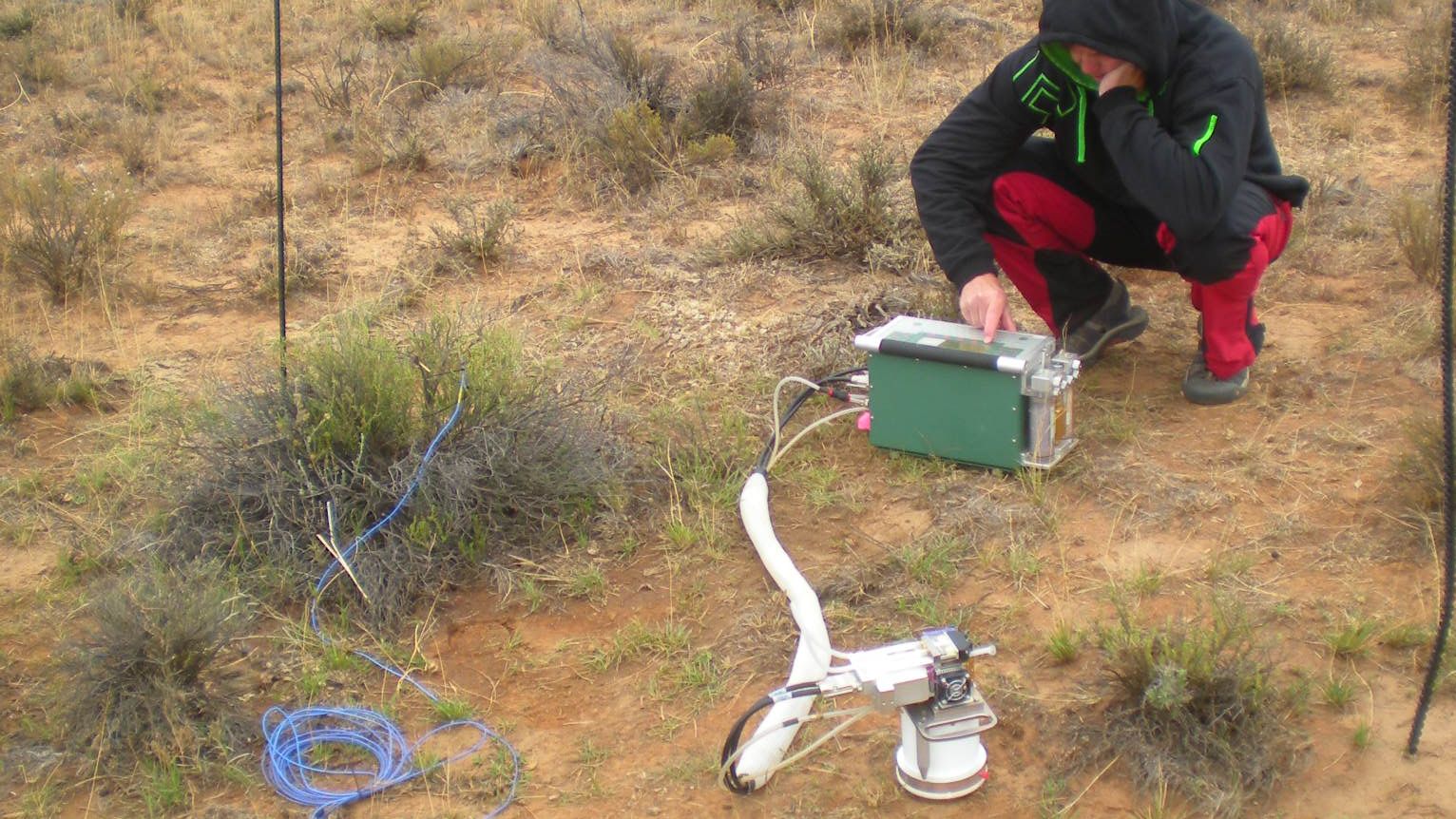Vegetation and Ecosystem Modelling for Climate Impact Assessment
The impacts of climate change on South African vegetation are mediated by the complex interactions between fire, climate, human impact and atmospheric CO2. Dynamic Vegetation Models (DVMs) are computer-based models that can be used to simulate growth and distribution of different functional types of plants in response to these drivers and the interactions between them.
In this EMSAfrica work package, our team develops and applies DVMs like the adaptive Dynamic Global Vegetation Model (aDGVM, aDGVM2), and LPJ-GUESS. These models include important factors in savanna dynamics like responses to atmospheric CO2 concentration, fire and grazing. We aim to project how vegetation zones are going to shift and change as a result of climate change and human management impacts in Southern Africa.
Detecting changes in ecosystems helps us to identify areas that require special attention in ecosystem management, and to contribute to protecting and maintaining vulnerable ecosystems and their biodiversity.
Furthermore, our team conducts ecophysiological measurements of plants at the project sites, to improve our understanding of the impacts of climate change on individual plants, and thus, entire ecosystems. With these ecophysiological measurements, the DVMs can be parameterized for local vegetation.
Team: Thomas Hickler (subproject lead, JWGU/SBiK-F), Simon Scheiter (SBiK-F), Carola Martens, Mulalo Thavhana (JWGU/SBiK-F), Guy Midgley (SU), Nicola Stevens (SU). Contact: thomas.hickler@senckenberg.de


